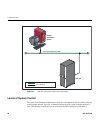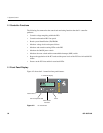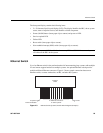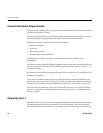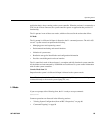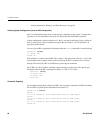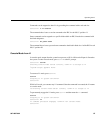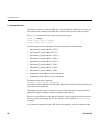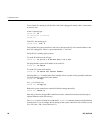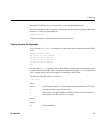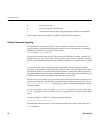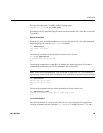
86 007-4857-002
4: System Control
• “Viewing Information, Warnings, and Error Messages” on page 94
Viewing System Configuration (from an IRU’s Perspective)
An L1 has limited knowledge of the system topology, depending on the system’s configuration.
Typically, an L1 has information only about L1s that are directly NUMAlink connected.
In large configurations with more than one L1, the L1 may have knowledge of only a portion of
the L1s in the system. These configurations require the use of the L2, see “L2 Operation” on
page 89 for further details.
You can view an IRUs configuration information with the config command as in the following:
001c01-L1> config
:0 001c01 LOC
001c01-L1>
This example is a system with one IRU. The <number> that follows the colon (0, 1, and 2, from
top to bottom in this example), refers to which local port the IRU is connected to or accessed
through. The local (LOC) IRU is the IRU that is processing the command.
On all IRUs :0 is the local IRU, with other values referring to various ports. The specific port
description follows the IRU’s rack/type/slot field: (i.e. LOC, U-F, U-G, etc.)
021c01-L1> config
:0 021c01 L0C
:2 021c11 L1H
021c01-L1>
Command Targeting
All commands entered affect only the local IRU. You can target a command to all IRUs (including
the local IRU) by prefixing the command with an asterisk (*).
001c01-L1> * version
001c01:
L1 0.7.37 (Image A), Built 08/24/2006 14:59:42 [2MB image]
001c11:
L1 0.7.37 (Image A), Built 08/24/2006 14:59:42 [2MB image]
001c21:
L1 0.7.37 (Image A), Built 08/24/2006 14:59:42 [2MB image]
001c01-L1>





